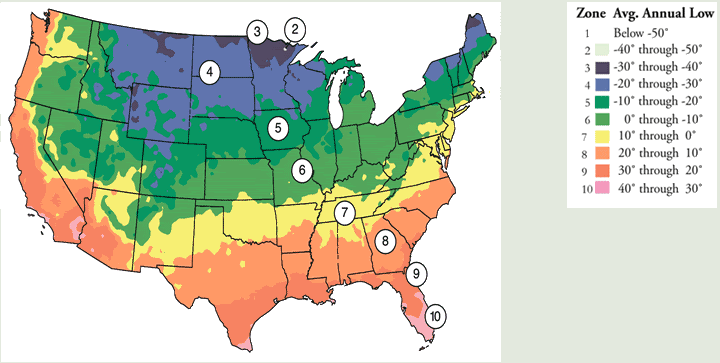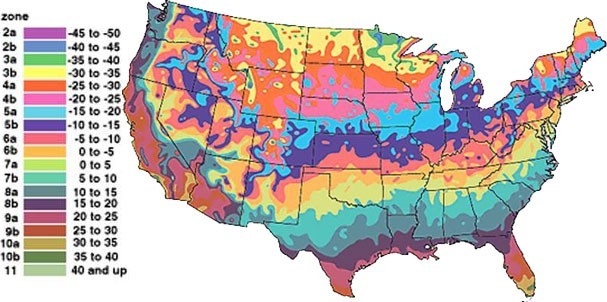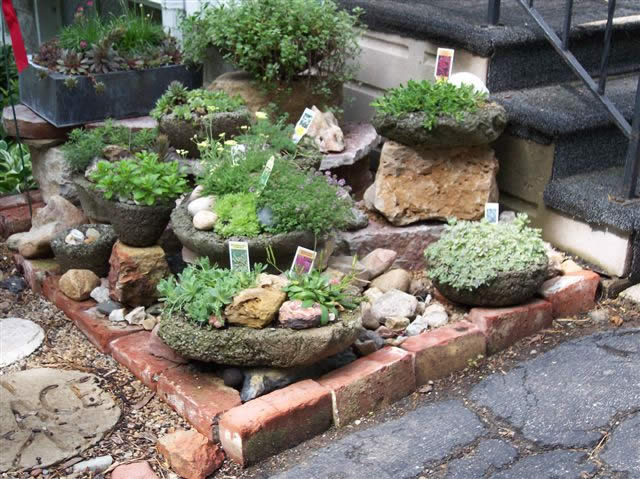 Fertilizing — that is, supplying your plants with supplemental minerals — is an important part of gardening. I address the specific needs of specific types of plants in their respective chapters. What follows here isn’t the last word on the subject but rather a quick introduction. A well-timed dose of fertilizer really boosts a plant. You can’t argue with success! Just as a healthy diet allows a person or animal to prosper, so does a good and appropriate supply of nutrients keep a plant healthy and happy. Plants have complex systems in need of chemicals to help them produce their own foods. The three primary plant-growth elements, or nutrients, are as follows:
Fertilizing — that is, supplying your plants with supplemental minerals — is an important part of gardening. I address the specific needs of specific types of plants in their respective chapters. What follows here isn’t the last word on the subject but rather a quick introduction. A well-timed dose of fertilizer really boosts a plant. You can’t argue with success! Just as a healthy diet allows a person or animal to prosper, so does a good and appropriate supply of nutrients keep a plant healthy and happy. Plants have complex systems in need of chemicals to help them produce their own foods. The three primary plant-growth elements, or nutrients, are as follows:- N (nitrogen): Enhances stem and leaf growth (for most plants, nitrogen ends up being the most important nutrient)
- P (phosphorus): Contributes to flower production, fruit production, seed production, and root growth
- K (potassium): Ensures general vigor; helps plants resist disease
An all-purpose, balanced formulation contributes to overall plant health. These top three nutrients are usually listed on the back labels of bags of fertilizer that you can buy in any garden supply store. They’re usually listed in order as numbers on the package (N-P-K). A balanced fertilizer (one that contains the three most important elements — nitrogen, phosphorus, and potassium) may show up as 5-10-5 or even 5-10-10. Nitrogen-heavy lawn fertilizer usually has a high first number. You can find are plenty of other variations, depending on the intended use of the fertilizer.
A fertilizer label often tells you which kind of fertilizer is best for your particular garden. If in doubt about your garden’s exact needs, talk to someone at your local garden nursery or supply store. Chances are that their own garden needs aren’t much different from yours!
Certain plants demand more or less of the top three nutrients (for instance, lawn grass loves nitrogen best — consult Chapter 10 if you need to know more about that). But most garden flowers are not specialists, which is why generally fertile soil is desirable and why all-purpose fertilizer is most commonly recommended.
Good soil also contains secondary nutrients, like calcium, magnesium, and sulfur, as well as some trace elements, called micronutrients, that enhance plant health and growth. You usually don’t have to add these nutrients to the soil. However, soil tests sometimes indicate that gardeners should add micronutrients or secondary nutrients, especially calcium.
Fertilizing good soil is often optional. If you have fertile, organically rich soil, many of your plants may do just fine without it — particularly if you develop the habit of amending the soil regularly (once or twice a year) with more organic matter. If your garden soil is organically rich, it’s fertile and thus should have the major elements. If not, or if you’re pushing your plants to peak performance, you can use plant food or fertilizer, natural or organic, to supply or supplement these important nutrients.
Constantly fertilizing lousy soil isn’t a good idea. Not only is it a lot of work and expense for you, but it’s also a losing battle. Salts build up, plants are never really healthy in the long term, and the soil texture remains poor. You’re far better off increasing the organic matter and just using fertilizer as a nutrient boost for your plants — if they need it. Organic matter — once-living material that releases nutrients as it decays — includes compost, dehydrated manure, chopped leaves, damp peat moss, and ground-up bark. Depending on what you use, how much, the plant in question, and so forth, the effects of adding fertilizer can be impressive. But they’re not instant. Wait two weeks to a month before assessing the results. “Feed the soil, not the plants!” is an old gardening adage, and frankly, these are words to live by, folks. You can’t go wrong taking the time and effort to build up soil fertility and structure at least once a year, more often if the opportunity presents itself. Dig in organic matter, add it to every planting hole (except when planting trees and shrubs), top-dress (sprinkle some on the soil surface at planting time), and side-dress (deliver more over the root zone midseason). Why? Because plants and soil organisms like to eat it up and ask for more.
A fertilizer label often tells you which kind of fertilizer is best for your particular garden. If in doubt about your garden’s exact needs, talk to someone at your local garden nursery or supply store. Chances are that their own garden needs aren’t much different from yours!
Certain plants demand more or less of the top three nutrients (for instance, lawn grass loves nitrogen best — consult Chapter 10 if you need to know more about that). But most garden flowers are not specialists, which is why generally fertile soil is desirable and why all-purpose fertilizer is most commonly recommended.
Good soil also contains secondary nutrients, like calcium, magnesium, and sulfur, as well as some trace elements, called micronutrients, that enhance plant health and growth. You usually don’t have to add these nutrients to the soil. However, soil tests sometimes indicate that gardeners should add micronutrients or secondary nutrients, especially calcium.
Fertilizing good soil is often optional. If you have fertile, organically rich soil, many of your plants may do just fine without it — particularly if you develop the habit of amending the soil regularly (once or twice a year) with more organic matter. If your garden soil is organically rich, it’s fertile and thus should have the major elements. If not, or if you’re pushing your plants to peak performance, you can use plant food or fertilizer, natural or organic, to supply or supplement these important nutrients.
Constantly fertilizing lousy soil isn’t a good idea. Not only is it a lot of work and expense for you, but it’s also a losing battle. Salts build up, plants are never really healthy in the long term, and the soil texture remains poor. You’re far better off increasing the organic matter and just using fertilizer as a nutrient boost for your plants — if they need it. Organic matter — once-living material that releases nutrients as it decays — includes compost, dehydrated manure, chopped leaves, damp peat moss, and ground-up bark. Depending on what you use, how much, the plant in question, and so forth, the effects of adding fertilizer can be impressive. But they’re not instant. Wait two weeks to a month before assessing the results. “Feed the soil, not the plants!” is an old gardening adage, and frankly, these are words to live by, folks. You can’t go wrong taking the time and effort to build up soil fertility and structure at least once a year, more often if the opportunity presents itself. Dig in organic matter, add it to every planting hole (except when planting trees and shrubs), top-dress (sprinkle some on the soil surface at planting time), and side-dress (deliver more over the root zone midseason). Why? Because plants and soil organisms like to eat it up and ask for more.














